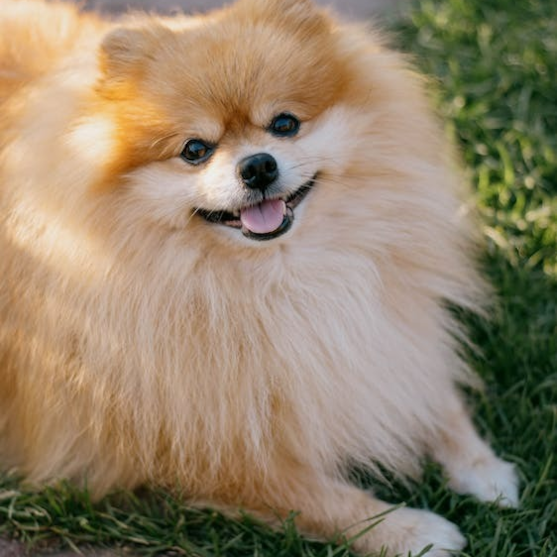Pomeranian Breed Information


Pomeranian puppies are sweet, fun-loving fur babies that thrive in any type of household. They are easygoing, intelligent, friendly, and very responsive to training. These puppies also come with rich, fluffy coats and a cuddly disposition to match. They are toy-sized, happy, and driven towards a life of adventure. Pomeranian puppies are a wonderful fit for single owners, kids, and senior families and, despite their tiny, adorable size, these pups are hardy, active, and independent.
Characteristics
- The Pomeranian dog breed is a member of the AKC’s Toy Group
- Pomeranian puppies are very eager to please their owners; they take well to training and are quick learners
- Pomeranian colors can differ between black, brown, and white or cream coats, or a mix of any of these colors
- Pomeranian tails are the most playful and expressive part of their body, they seem to do most of the talking
- The Pomeranian dog gets along famously with pretty much everyone he meets, including children, other dogs, and even cats. In fact, some are so good with cats they can become one of the family's feline babysitters
- Are Pomeranian hypoallergenic is a question many want to know. Pomeranians do not shed lots of fur. This diminishes manifestations of dog allergies. Sensitivity sufferers are impacted through the dog’s pores and skin cells which might be shed, not just the fur itself
- Adult Pomeranian weight is between 4-7 Pounds

Appearance
Pomeranian spitz are recognized by their rich cushioned double coated fur and charming face with alert, prick ears. A thick rough around the neck finishes the image of a dog that could deal with the snows of northern Germany. This breed is a compact, squarely proportioned dog with a rich and fluffy coat. It possesses some spitz traits like small ears, a bountiful double coat, and a curved tail.
The Pomeranian ears are triangular, erect and upright. Its plumed tail lies flat on its back, with feathering across the tip. Some Pomeranian puppies are known for their foxlike faces. Their eyes show an alert, curious and proud expression. This breed has a smooth undercoat with a bountiful, rougher outer coat that flows off the body. The additionally thick ruff of fur around its neck offers the breed its fluffy, plush look.
Pomeranian colors include red, white, black, brown, and cream. The Pomeranian size for an adult Pomeranian, as per the breed’s standard, is an average of 4 to 7 pounds and 8 to 11 inches.
Temperament
The Pomeranian dog makes a most wonderful pet for active families. These beautiful dogs are built for agility and enjoy any opportunity to be outside where they can explore, play with their owners, or get enticed in a friendly chase with their four-legged friends.
The Pomeranian puppies are often described as a mix between a dog and a teddy bear. They are very affectionate, cuddly, and playful dogs. They love to run around, but they also love to sit on a lap while their owners watch TV or read a book. Pomeranian dogs are a toy breed and have all the characteristics that go with that, such as being very friendly, outgoing, and loving.
The Pomeranian dog is an adorable and energetic companion. This little dog can turn even the grumpiest of people into a puppy lover. The Pomeranian temperament is playful, intelligent, sociable, and extroverted. This breed loves to play with other animals and children. They are full of energy and will do best with someone who has the time for daily walks or jogs. The Pomeranian teddy bear is also very good at learning tricks and commands, making these pups an excellent choice for families with children who want a pet that can participate in games and fun activities with the family.
Care
Pomeranian Grooming
Thanks to their small size, Pomeranian grooming requirements are minimal. Two or three weekly brushings to remove loose hair will keep them tidy. Bathe them as needed but never use human shampoo on dogs, as it can cause skin irritation or allergies. A professional groomer should be consulted when trimming the Pomeranian’s nails to prevent infection or injury from overgrowth.
The Pomeranian’s ears need regular checking and cleaning as well to prevent infections, and they also require cleaning around the eyes if they become teary or weepy. You should also brush your Pomeranian’s teeth regularly to prevent dental decay, bad odor, and gum problems.
Pomeranian Exercise Needs
Pomeranian dogs are loving and playful beings who enjoy being with people more than anything. These dogs are undemanding but still need daily exercise. A short walk or two every day will keep them happy. They also love joining their humans on long walks, jogs, or strolls around the neighborhood.
Pomeranian puppies are known for being especially great at tracking, retrieving, and performing tricks - such as jumping through hoops, so it is beneficial to provide plenty of opportunities for them to indulge in their hobbies. They also like to chase mechanical toys that move erratically across the floor or ground. Providing your Pomeranian dog with interactive toys that encourage exercise is a great way to ensure that your pup is entertained throughout the day when indoors.
Pomeranian Health
Pomeranians are a healthy and long-lived dog breed, but they may also be prone to certain health conditions, like vision problems (especially during old age), dental issues, and obesity. It’s important to watch your Pomeranian dog food diet in order to prevent weight gain. Any dog that suffers from obesity is at a higher risk of developing joint problems, diabetes, and other illnesses. Obesity can be caused by overfeeding or under-exercising. Be sure to pay attention to how much your Pomeranian baby eats and how much exercise it gets. If you’re unsure about what your pet needs, ask your veterinarian for advice on a healthy diet and exercise routine that will help keep your Pomeranian at a healthy weight.
Pomeranian Life Span
Small dogs are known for their feisty personalities and The Pomeranian puppy is no exception. Highly affectionate and full of energy, their small size belies a bigger-than-life attitude. The average life expectancy of a Pomeranian dog is 12-16 years. However, this can vary depending on the care that the Pomeranian teddy bear receives throughout its life. A well-nourished, well exercised Pom with no hereditary health problems can easily live to 16 years or beyond.
Pomeranian Training
The first few months of your Pomeranian puppy’s life are the most important ones. This is when your Pomeranian puppy learns which behaviors are expected, and which are not. Pomeranian puppies are an easy dog breed to train, and given their happy disposition, they also make training a fun activity for the owner. Like most small dog breeds, Pom puppies respond well to positive reinforcement and reward-based training methods. They are fond of being both encouraged and rewarded with treats, toys, and praise. Rewarding your Pomeranian dog whenever they do something right will help reinforce good behavior. This will make training much easier, and they'll soon be running to your side whenever you call.
When training a Pomeranian puppy, it is best to find a room where distractions are minimized, and the environment is relaxed. Like all small puppies, Poms can be easily distracted by noise, interruptions, or people. A gentle approach gives the best results when training Pom puppies.
You can start training your Pomeranian puppy as soon as you bring him/her home and begin with simple basic commands. Once your puppy masters the first basic commands, you can then move on to lessons of independence, leash walking, and socialization.
History
Pomeranian puppies were bred down from larger sled dogs and originally used for herding sheep. Since then, their sole purpose has been to be the companion pets and lapdogs of humans. The Pomeranian dog is a toy breed that originated in the Pomerania region of Central Europe. The breed's name comes from the region. Pomeranians were first imported to England in the mid-19th century, and they quickly became fashionable among British nobility.
The Pomeranian is a breed of dog of the Spitz type that was named for the Pomerania region in Central Europe (today part of northern Poland and eastern Germany). It typically has brown eyes, a thick double coat, and erect ears.
The Pomeranian origin is unknown, as no records exist of its beginning. It is generally accepted that Pomeranians are descended from the larger Spitz-type dogs, such as the German Spitz. The breed has been determined to have originated in either Scandinavia or Germany.
There are two sizes of Pomeranian, standard and miniature. Standard Poms weigh between 4 and 17 pounds, while miniature Pomeranians weigh as little as 1 to 4 pounds. There are also three colors in which they can be found: black, red, and sable.
The Pomeranian dog breed was officially recognized by The Kennel Club in England in 1888 and soon rose to prominence as one of Britain's favorite toy breeds. By 1903, a Pom had made its way across the Atlantic Ocean and become a favorite of American society women. Since then, the Pomeranian has remained popular among toy dog fanciers around the world and is currently ranked 23th on the American Kennel Club's list of popular dog breeds.
The AKC describes the Pomeranian puppies as "a companion par excellence" and "the most colorful" of all toy breeds. These little dogs have been bred over many generations to be easily trainable and responsive to human beings; they are often used as therapy dogs because of their gentle nature and affectionate personalities.
A theory about Pomeranian history states that Queen Victoria loved this breed so much that she imported them from Central Europe in the 1800's. She found that they made good companions for her children and her many pug dogs. This led to their rise in popularity there, then throughout Europe and finally arriving in America around 1900.
In the past three decades, the Pomeranian has also been chosen to be a parent in several mixed breeds such as the Pomapoo, Pomsky, and Maltipom.




